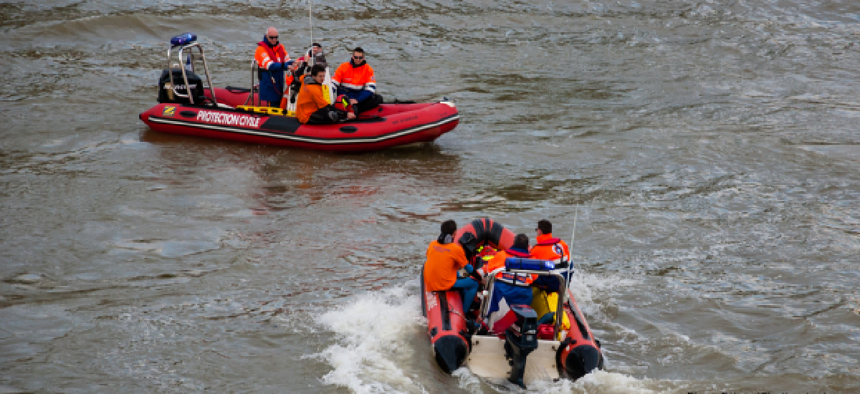FCC clears way for field equipment to be used on FirstNet

FCC approves technical rules and directs its Office of Engineering and Technology to begin equipment certification process for the nationwide public safety broadband network.
The adoption of technical rules for the proposed FirstNet public safety network clears the way for approval of communications equipment that would operate in that block of the 700 MHz radio band.
The Federal Communications Commission approved the rules Oct. 28 and ordered that they go into effect immediately.
“The rules we adopt today will provide a necessary foundation for FirstNet’s operations and expedite the availability of equipment for use in this band,” the commissioners wrote. The rules were put on a fast track in response to what the FCC called an “urgent need” for the equipment in the field.
FirstNet is expected to be a broadband network dedicated to public safety communications operating in radio frequency channels recently vacated by commercial broadcasters. It would support not only voice communications, but also video, images and other data using the commercial Long Term Evolution (LTE) standard.
The FCC had earlier ordered the Office of Engineering and Technology not to accept or process applications from equipment manufacturers pending the adoption of technical rules for how that equipment would work and impact adjacent bands of the RF spectrum. The rules were needed quickly because development of some network elements already has begun using federal grant money under the American Recovery and Reinvestment Act.
“With several near-term deployments now planned in FirstNet’s licensed spectrum, some under lease agreements that have already been executed, it is essential that the Commission commence its equipment certification process for this band as soon as possible ... .” the commissioners wrote in their notice.
Rules typically take effect 30 days after publication in the Federal Register, but that period was waived and OET was ordered to begin processing applications right away.
Most of the new rules harmonize existing rules for commercial and public safety use.
The First Responder Network Authority (FirstNet) was established within the Commerce Department’s National Telecommunications and Information Administration under the Middle Class Tax Relief and Job Creation Act. The authority holds the license to the D Block of the 700 MHz band, including the 758-769 MHz and 788-799 MHz bands, which has been set aside for the public safety network to meet the needs of more than 60,000 federal, state, local and tribal public safety agencies. It will be a nationwide backbone based on the open LTE standard and using commercially available equipment. LTE also is being rolled out by commercial carriers for cellular and Internet services to support high-speed wireless communications.
FirstNet would provide a broadband complement to existing land mobile radio and interoperable P25 radio services now used by law enforcement, fire and rescue and other public safety agencies. It initially would offer mobile IP data connectivity, but eventually it could also provide alternative voice radio services.
FirstNet is in the process of defining needs and evaluating the capabilities of commercial service providers to meet them.
The D Block license went to FirstNet in November 2012, and FCC this year began the process of replacing rules that were deleted when the spectrum’s use was changed.
Many of the old rules for commercial and public safety networking that needed to be realigned were substantively similar or identical to one another, and in most cases they were consolidated rather than changed. Major areas addressed include:
- Power limits for equipment. The rules were consolidated without additional restrictions on hand-held LTE devices. The FCC might consider more restrictive limits on power flux as transmission sites are configured if circumstances warrant.
- Out-of-band emission limits. It is necessary to protect some types of GPS receivers from interference from the FirstNet band. Restrictions on bleed-over were not increased but the FCC will “encourage FirstNet to work cooperatively with adjacent-channel narrowband licensees to ensure that their respective operations are adequately protected.”
- Field strength limits. These limits prevent interference between FirstNet and existing state safety networks. “Although FirstNet is licensed on a nationwide basis, we acknowledge the importance of minimizing interference between the FirstNet network and any ‘State Network’ deployed in the same spectrum,” the commissioners wrote. “A State electing to deploy its own network must submit an interoperability plan for the Commission’s approval; apply to NTIA to lease spectrum capacity from FirstNet upon demonstrating that will have the technical capabilities to operate its network, have the ability to maintain ongoing interoperability with FirstNet, and provide a comparable quality of service; and pay any user fees associated with its use of FirstNet’s core network.”
- Interference coordination between FirstNet and other operators in the 700 MHz band. No requirements for coordinating efforts were adopted.
- International considerations. Rules for commercial and public safety were consolidated. Operations are subject to international agreements with Mexico and Canada to avoid cross-border interference.
- 700 MHz public safety guard band. Existing bands (768-769 and 798-799 MHz) are left in place to provide buffers between spectrum used by other networks.
- Equipment certification. Consolidates requirements and “directs the Office of Engineering and Technology to certify equipment in this band consistent with the technical rules adopted in this … order.”





